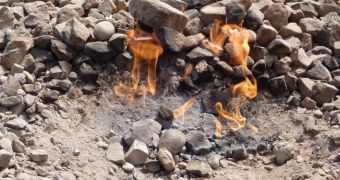According to the conclusions of a new study accepted for publication, it would appear that the United States emitted less sulfur dioxide (SO2) and nitrogen oxides in 2013. This decrease was largely due to the country refocusing its development efforts towards using natural gas for energy production.
The decrease also amounts to a 23 percent reduction in carbon dioxide (CO2), compared to values that would have been recorded if the same amount of energy had been been produced by burning coal. This research underlines the potential of natural gas in fighting global warming and climate change.
According to the paper, SO2 and nitrogen oxide levels were 40 percent lower in 2013 than what would have been recorded if the same number of coal-burning power plants remained in use. Natural gas leads to emission reductions because it only releases half the amount of dangerous chemicals coal does.
The United States, one of the world's top energy producers and consumers, needs to reduce the amount of pollution it releases into the atmosphere yearly. At this point, coal remains one of the most widely-used fuels for power plants, and this leads to vast amounts of CO2 being released into the atmosphere.
In the investigation, scientists analyzed emissions coming from smokestacks around the country, recorded several times per year since 1997. Based on these figures, experts then calculated how much greenhouse gases were being released per unit of energy produced in the entire country.
Coal-fired power plants were found to produce a total of 32 ounces of carbon dioxide for every kilowatt hour of energy they produced, compared to natural gas-fired plants' 19 ounces. The study revealed that gas-fired combined-cycle power plants were the most efficient, releasing just 15 ounces of CO2 for every KW/h produced.
“Since more and more of our electricity is coming from these cleaner power plants, emissions from the power sector are lower by 20, 30, even 40 percent for some gases since 1997,” explains the lead author of the upcoming study, Joost de Gouw, quoted by Daily Climate.
The expert holds an appointment as an atmospheric scientist with the US National Oceanic and Atmospheric Administration's (NOAA) Cooperative Institute for Research in Environmental Sciences, which is based at the University of Colorado in Boulder (UCB).
Officials statistics from the US Energy Information Administration (EIA) indicate that coal usage in American power plants has decreased from 50 percent in 2005 to 39 percent in 2013, reflecting a wider availability of natural gases at lower prices.

 14 DAY TRIAL //
14 DAY TRIAL //